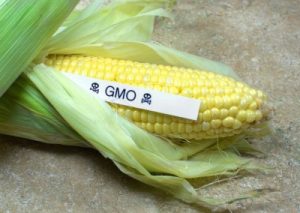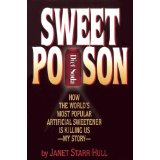
Monsanto. A name we, unfortunately, know all too well.
As much harm that this company has done to the health of this planet, Monsanto is now gone, passing its legacy to the German company Bayer. But unfortunately, Monsanto’s footprint will never go away.
Monsanto will continue to loom like a ghost from the past.
In 2004, Monsanto Chemical Company applied to the FDA for commercial approval of genetically engineered wheat.
AT the time, it was predicted that this would have far-reaching effects on farmers, consumers, and the environment.
Today, the predictions were proven correct.
Organic farmers have faced genetic cross-contamination. Conventional farmers have lost their freedom to save their seeds because Monsanto held the right to enforce its patents.
Farmers have also lost overseas markets because genetically engineered (GMO) grains aren’t wanted in most foreign countries. Prices have failed the farmers, just like with GMO corn.

Think about it: when you have the choice to buy organic corn as opposed to GMO corn, which one do YOU choose?
Needless to say, Monsanto has had a very dicey background for decades. Remember … they created The NutraSweet Company.
Monsanto Chemical Company is a leading provider of agricultural products and the chemical solutions for farmers, as in …
… Roundup®, the world’s most controversial best-selling herbicide, as well as other herbicides.
Monsanto produces seeds, including DEKALB® and Asgrow®, and they provide farmers and other seed companies with biotechnology traits for insect protection and herbicide tolerance.
That’s a stealth way of saying altered seeds.
They also are responsible for the creation and distribution of the Bovine Growth Hormone, and have deep-rooted connections within the soft drink industry through the original patents on both saccharin and aspartame. They created NutraSweet when they bought GD Searle Pharmaceuticals in 1971.
What are the fine points behind this powerful company and how did it acquire such dominant world influence and diversity?
Monsanto’s History
Monsanto Chemical Works opened its doors in St. Louis in 1901. In 2001, Monsanto celebrated its 100th anniversary as a business enterprise.
After 30 years in the pharmaceutical industry, John Francis Queeny, still an employee of Meyer Brothers Drug Company, sank his savings and money borrowed from a Chicago soft drink supplier into a new company to produce products for the food and pharmaceutical industries.
He named the company after his wife, whose maiden name was Olga Monsanto. The corporate papers were filed on Nov. 29, 1901.

In 1902, Monsanto gained its reputation manufacturing saccharin, the company’s first product. In 1903 to 1905, their entire saccharin output was shipped to the growing soft drink company in Georgia called Coca-Cola®.
In 1904, Monsanto introduced caffeine and vanillin as products for the escalating soft drink industry. Initially, vanillin was produced by extracting a chemical from cloves that were purchased from the Sultan of Zanzibar who insisted that the left-over spices be returned to him.
Cloves had an important religious significance in the cremation of bodies, so there was importance in shipping them back to Zanzibar instead of disposing of them as waste in the United States.
By 1915, Monsanto’s sales surpassed the $1 million mark. Two years later, the company began the production of aspirin. Monsanto remained the largest U.S. producer of aspirin until the 1980s.
In 1917, the U.S. government filed suit over the safety of saccharin. Filed at Monsanto’s request as a test case, the suit was dismissed in 1925, ending the government’s unsuccessful attempts then to prove saccharin harmful.
World War II brought Monsanto and the American government closer together as Monsanto became involved in research on uranium for the Manhattan Project, which led to the first nuclear bombs.
Later, Monsanto operated the Mound (Ohio) Laboratory as a nuclear facility for the Federal government until the late 1980s, and their Dayton Laboratory was used as a research facility for nuclear-based and other government-funded projects.
Monsanto was in the petroleum business by 1955, having acquired Lion Oil primarily to provide themselves petrochemical raw materials. Lion Oil also put the company into the fertilizer business, and brought to Monsanto hydrocarbon technology, oil and gas reserves, and a retail gasoline business. The refinery and service stations were sold in 1972.

In 1977, Monsanto established a joint petrochemical venture with Conoco Oil Company at the Chocolate Bayou plant. They were eventually bought out and the money from the acquisition fueled their drive to acquire a pharmaceutical company.
At this time, G.D. Searle & Co. had succeeded in getting the U.S. Food and Drug Administration to finally approve NutraSweet (aspartame) for the second time, and prepared to sell the company to Monsanto in 1985.
In 1981, saccharin was again questioned as a carcinogen, but no conclusive scientific proof was ever presented. At this time, it was decided that in 2001, the cancer warning would be removed from saccharin products because saccharin was shown, once again to be safe for human consumption, as it had never caused cancer in humans.
Despite saccharin’s cancer ‘propaganda’ in 1981, Monsanto purchased G.D. Searle & Co. in 1985, taking the company deeper into pharmaceuticals and into the sweetener industry.
Aspartame, saccharin’s first competitor, was now owned and marketed by the same company – Monsanto.
By 1998, Monsanto started buying seed companies and genetic laboratories.
In December 1999, Monsanto and Pharmacia & Upjohn announced plans to merge the two companies. Monsanto and Pharmacia & Upjohn completed their merger on March 31, 2000, naming the new company the Pharmacia Corporation.
The agricultural operations within Pharmacia retained the Monsanto name – the company responsible for Roundup, the Bovine Growth Hormone, multifarious seed companies, saccharin and NutraSweet.
When Spelnda® came on the US market in 2000, Monsanto sold its sweetener business, including the NutraSweet brand sweetener, for $440 million.
In 2018, the German company, Bayer, bought Monsanto for $63 billion – yes, BILLION – making Bayer the biggest seed and agricultural-chemical maker in the world.
Since the purchase, Bayer has been plagued by a series of challenges from regulators and legal pitfalls, including on-going legal battles over Roundup.

So what’s in Monsanto’s future?
Monsanto was pronounced dead on June 4, 2018. Its ghost will continue to haunt consumers worldwide, nonetheless, as more and more lawsuits come under the gavel.
Maybe one day, some day, Bayer will face more lawsuits concerning the toxicity of aspartame. One can only hope for some sort of justice.
Take a deep-dive into the tainted past of aspartame in my book, Sweet Poison. The details are stunning.
Good luck, Bayer, fighting Monsanto’s ghost of the past.
You get what you pay for …

If you want to learn more about aspartame dangers, Join my Private Membership Program.
Gain access to all of my online programs, ongoing support, monthly Q&A, and more by joining my Private Inner Circle Membership Program. I look forward to supporting you on your journey to alternative health and wellness.
_____________
Disclaimer: This article is for informational purposes only, and is educational in nature. The FDA may not have evaluated some of the statements. This article is not intended to diagnose, treat, cure, or prevent any disease. Please discuss with your own, qualified health care provider before adding supplements or making any changes to your dietary program.
Before taking vitamins, consult your doctor; pre-existing medical conditions or medications you are taking can affect how your body responds to multivitamins.